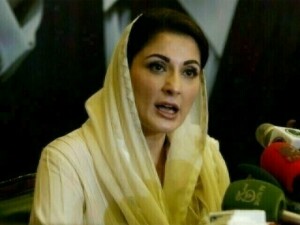Pakistan’s domestic financial borrowing system is loaded against the government of Pakistan and lenders (commercial banks) are on a killing spree. The government cannot borrow from the SBP, and the international sources are drying in the absence of IMF’s nod. Seeing, this, banks are smelling blood and going for kill. The regulator SBP, is not acting to counter banks’ rent seeking behavior, and the sole loser is government of Pakistan (taxpayers).
There are binding constraints of government borrowings. And with reversing interest rate cycle, banks’ party is on. The secondary market yields in six-month papers are trading at 106 bps premium to prevailing policy rate.
In the latest T-Bill auction, government rejected 6M and !2M papers as market was asking for too high rates. Government accepted Rs135 billion at a cut-off rate of 8.25 percent – 102 bps higher than auction on 9th September. The market is asking for more. They know that government has no choice, and they are dominating. It is like when you have one petrol pump to fill tank, the dealer can ask any (unreasonable) rate. The banks are doing this with government. Today, there is a PIB auction. Expect banks to ask for high rates, and government to reject it.
In such a scenario, the role of SBP – being a regulator, is critical. And that is missing. Just like SBP has a stated policy of intervening in the currency market to curb the volatility and to let the market to function in an orderly manner, there should be similar policy in the money market. The SBP should intervene to curb the volatility in the market rates.

The tool of open market operation (OMO) is to manage day to day liquidity in the banking system. If there is excess liquidity, SBP mops it up, and pumps in the market through reverse repo, when the liquidity is short. Nowadays, it seems there is a case of permanent liquidity shortage as the toll of reverse OMO stands at Rs1,835 billion and the number is around Rs 2 trillion for the past six months or so. For details read “Permanent liquidity shortage?”, published on 2nd June 2021.
Banks borrow from open market operations at close to policy rate (currently at 7.34%) and lend it to the government – mostly, at 25-50 bps spread. Now the spread is growing with market yields moving up. Banks party is on. Yet, the banks are not fully capitalizing it, as they are being lazy.
Ministry of Finance is offering floating PIBs, and one of the best instruments in volatile market for banks is 2Y-floating PIB. This is linked to 3M T-bills (spread of 40 bps over 3M-T-Bill weighted average yield), its coupon is quarterly and its re-priced fortnightly. That 15-days repricing is almost taking all the interest rate risk out of the equation for banks.

The current coupon rate is 8.57 percent and banks can borrow at 7.34 percent through reverse OMO. They have mouthwatering spread, yet they are not buying enough 2Y floating bonds. They are yet to tune the core banking systems to adjust for fortnightly repricing. Banks are losing free money – with no capital charge and no interest rate risk, for being lazy. Bank’s treasuries often operate with trading mindset, looking for capital gains and that is why they like fixed rate bonds.
The thinking must change. And the skewed incentive structure should be ironed out. For that the role of SBP as a regulator is critical. It should not see mere from the lens of banks, as SBP performance is measured on the capital strength of banks, and the capital adequacy and other rations improve with gains from PIBs and all – lately a falling bank almost recapitalized based on capital gains on PIBs (bought in 2019) during falling rates time in 2020-21.
SPB should consider outright buy options of consistently high reverse OMO – hovering around R2 trillion – 9.5% of banking deposits. SBP Act allows it to do so. The Section 18 of the SBP Act which deals with Open Market Operations, states that “the Bank (SBP) may operate in the financial markets buying and selling outright (spot or forward) or under repurchase agreement of Government securities purchased in the secondary market or such other means as may be deemed expedient”. SBP should give a signal to the market that it may buy Rs100-200 billion every month to improve the liquidity position in the market and that may help flatten the yield curve and help government to reduce its borrowing cost.























Comments
Comments are closed.